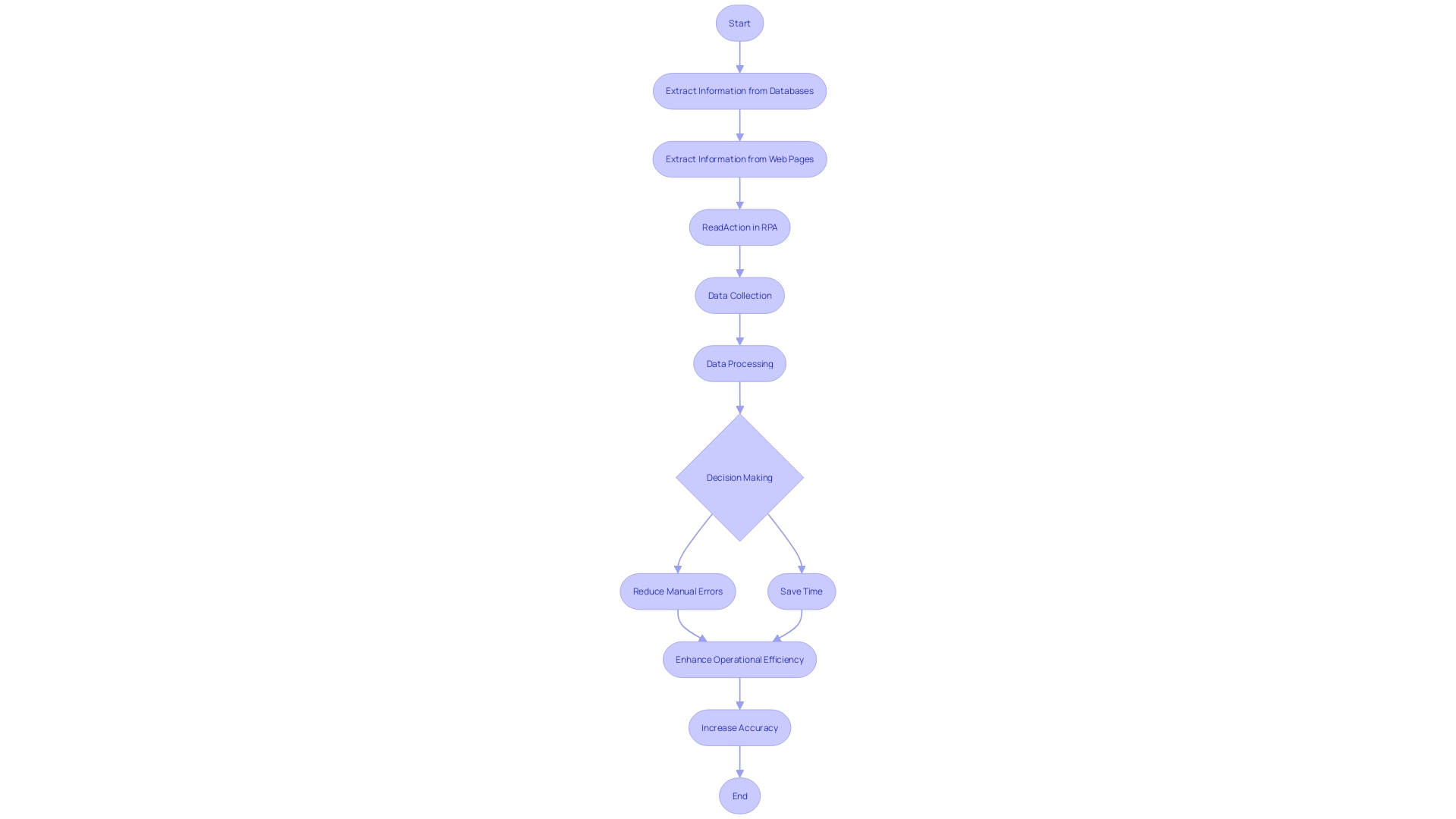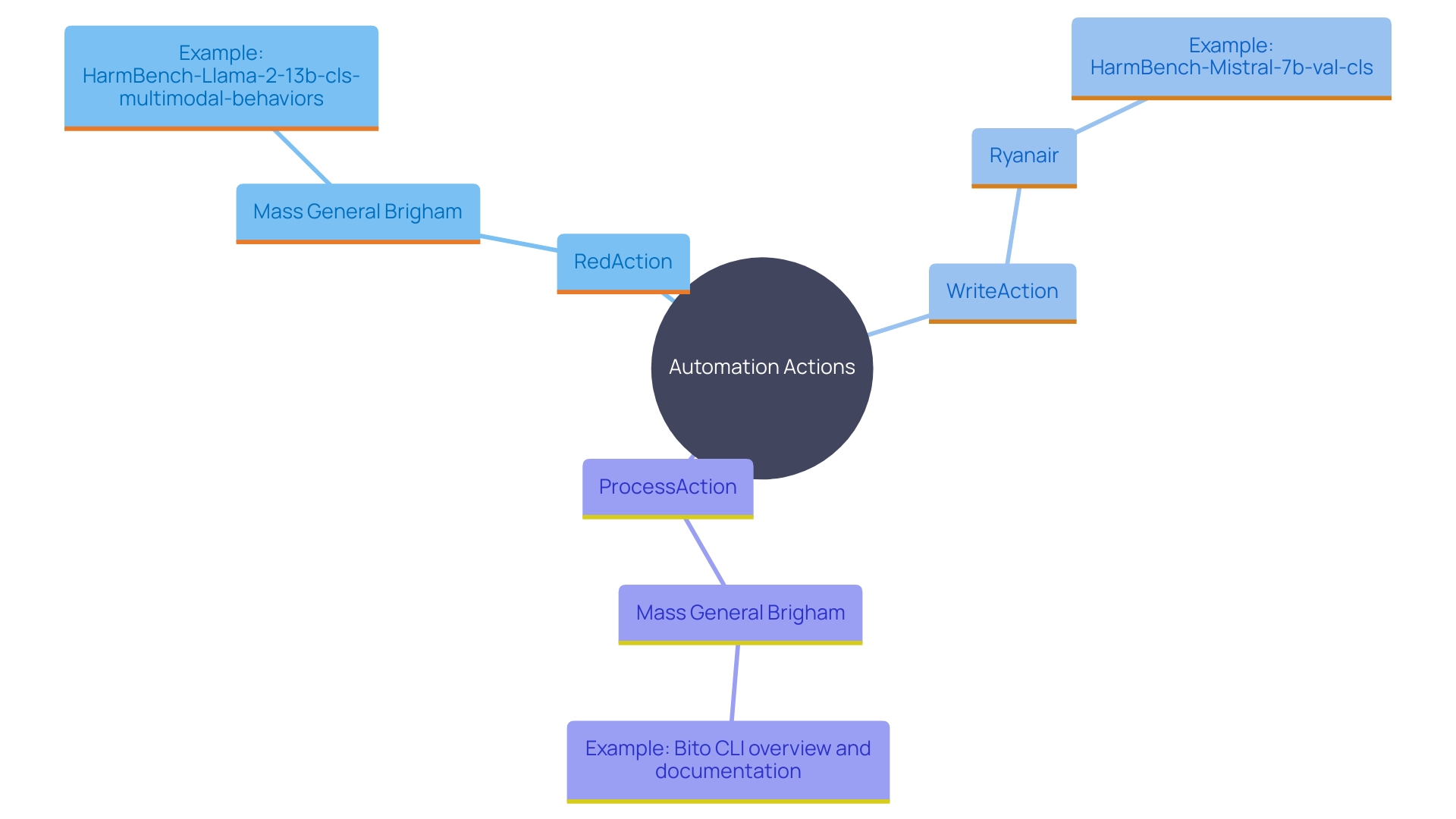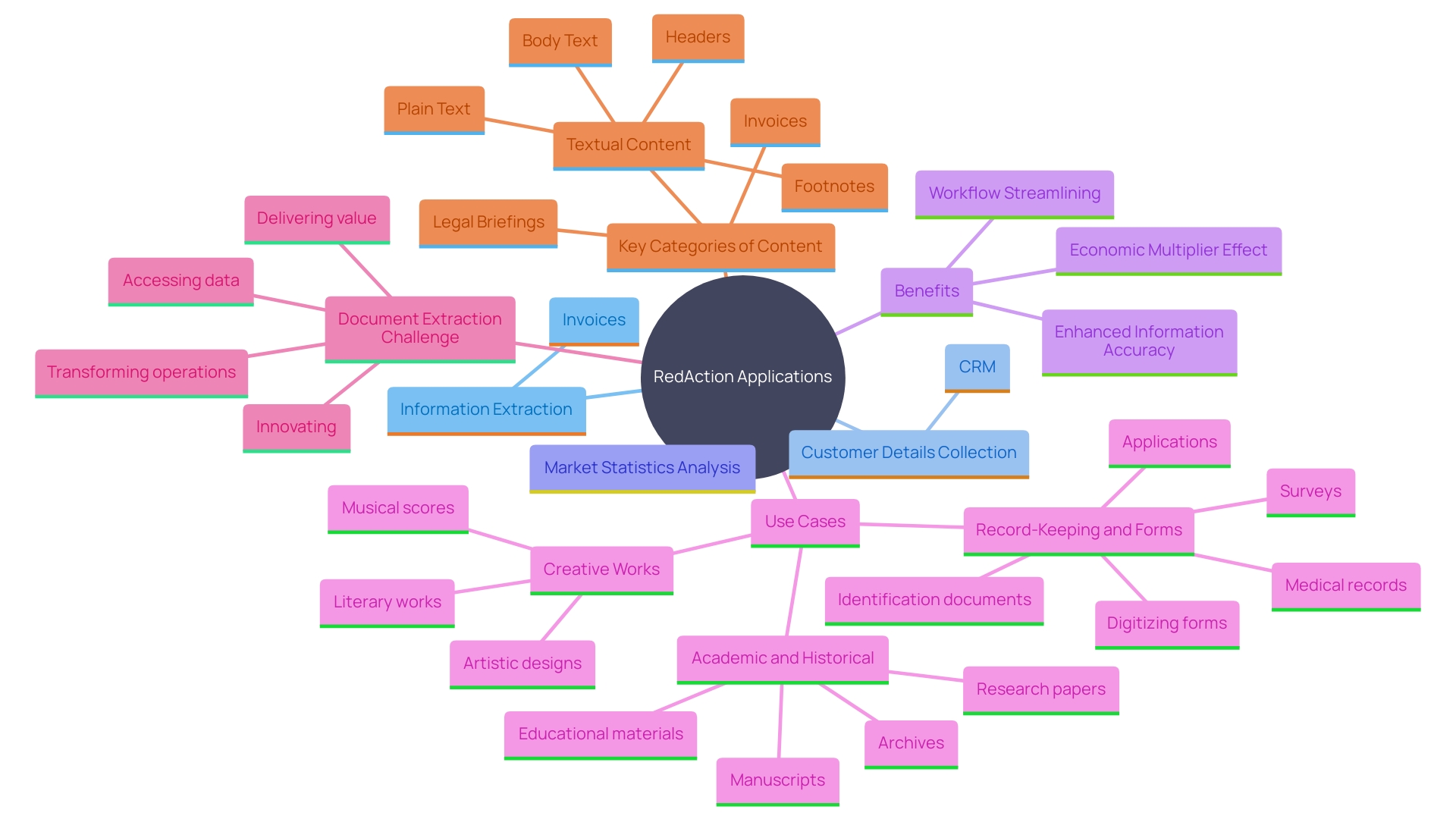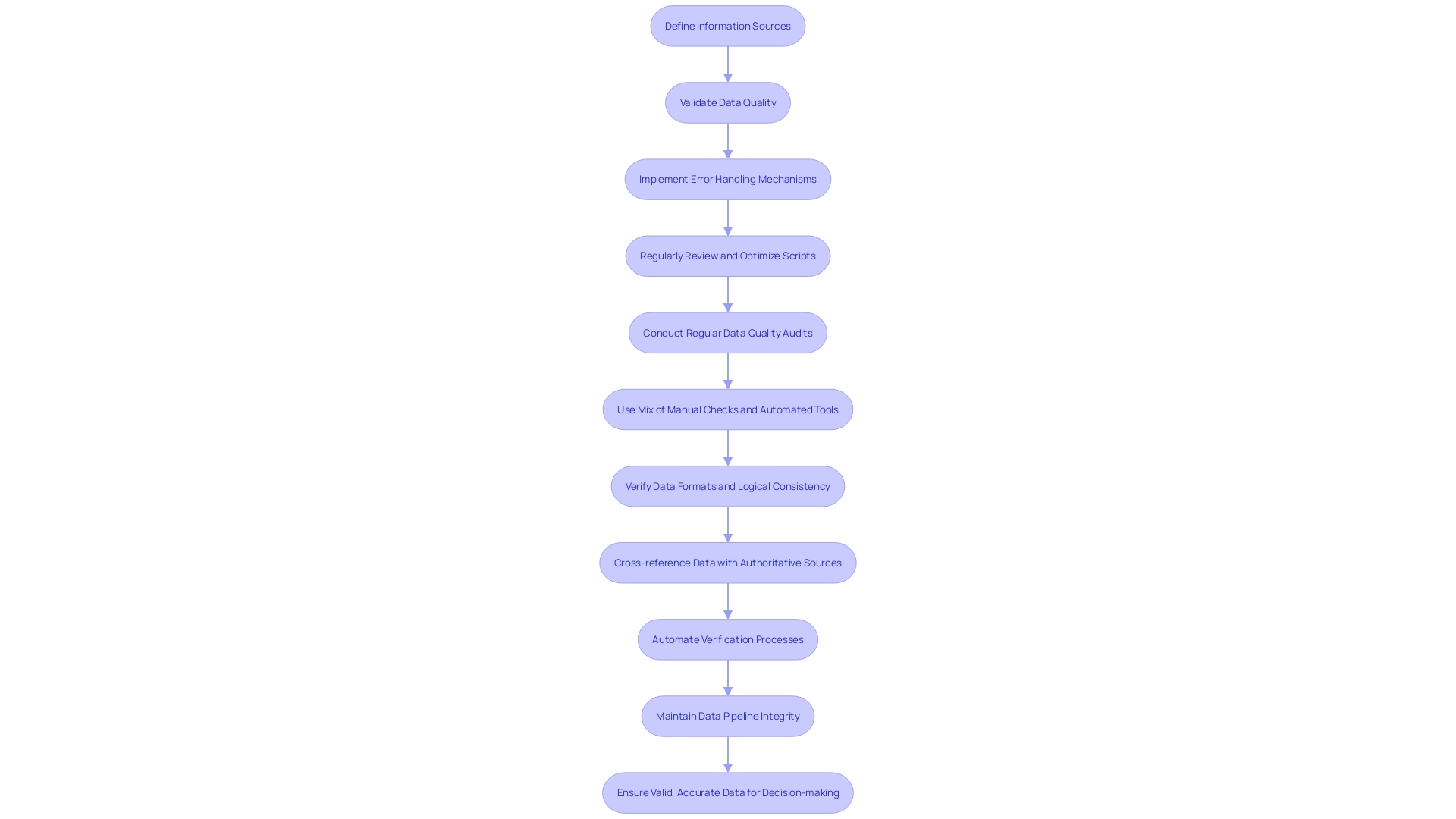Introduction
In the ever-evolving landscape of business operations, leveraging automation to enhance efficiency and accuracy is paramount. ReadAction stands as a cornerstone in robotic process automation (RPA), focusing on the extraction and processing of vital information from various sources such as databases, documents, and web pages. By automating these data-intensive tasks, businesses can reduce manual intervention, minimize errors, and make informed decisions more quickly.
This article explores the transformative power of ReadAction, its key differences from other automation actions, common use cases, and best practices for implementation. Discover how integrating ReadAction into operations can revolutionize data handling, drive operational excellence, and free up valuable human resources for strategic initiatives.
What is ReadAction?
‘ReadAction signifies a crucial automation task within the field of robotic process automation (RPA) intended for extracting and managing information from various sources such as databases, documents, and web pages. This systematic extraction of pertinent information empowers businesses to leverage this knowledge for critical decision-making, reporting, and enhancing operational efficiency. By automating the information collection procedure, Reduction reduces the requirement for manual involvement, greatly decreasing time and mistakes.
A compelling example of automation’s impact is seen in Ryanair’s disaster recovery system, which is now standardized using RPA. This standardization ensures a seamless execution of steps without human error, highlighting the reliability and accuracy that RPA brings to complex tasks. Moreover, the incorporation of AI into RPA enhances its functionalities, enabling the management of unstructured information which frequently represents the most critical aspect of business operations. As one expert noted, the combination of organized and unorganized information in processes typically presents a challenge that can be effectively managed by AI-powered RPA.
Furthermore, the function of technology in enhancing precision cannot be exaggerated. Human errors, particularly in data entry and report generation, can lead to significant financial losses and customer dissatisfaction. RPA’s precision in these areas not only saves costs but also enhances the overall quality of work. This increased accuracy, coupled with the ability to automate tasks previously dependent on human intervention, makes RPA an invaluable tool for modern enterprises.
Organizations aiming to enhance their workflows and minimize operational delays should take into account the findings from research highlighting the significance of assessing and incorporating suitable technological solutions. The seamless integration of these technologies with existing IT infrastructure can lead to substantial efficiency gains and cost reductions. For example, Warehow’s recent investment to increase its technology and storage capacity highlights the strategic shift towards improved mechanization capabilities, fostering growth and operational efficiency.
In conclusion, ReadAction and similar RPA tasks signify a transformative shift in how organizations manage data-intensive processes. By leveraging automation, companies can not only achieve higher accuracy and efficiency but also free up human resources to focus on more strategic activities, ultimately driving innovation and competitive advantage in a fast-paced business landscape.

Key Differences Between ReadAction and Other Automation Actions
Automation actions are diverse and cater to various operational needs. For example, RedAction concentrates on information retrieval, efficiently pulling insights from various sources. ‘WriteAction, in contrast, manages the entry of this information into systems, guaranteeing that the details reach their destination without manual effort.’. ProcessAction is essential as it applies business rules to the obtained information, automating decision-making processes. Comprehending these unique actions is crucial for customizing the appropriate process strategy to particular operational needs.
A notable example is the finance department of Mass General Brigham hospital system, which faced significant inefficiencies in tracking healthcare providers. They introduced a mechanized tool that not only gathered data automatically but also arranged it to emphasize necessary actions, significantly enhancing their workflow. In the same way, Ryanair’s application of process mechanization for disaster recovery and auto-remediation demonstrates how standardized procedures can reduce human error and guarantee effective response times. These examples highlight the importance of choosing the right automation actions to enhance operational efficiency and productivity.

Common Use Cases for ReadAction
RedAction finds applications across various industries and departments. Typical applications involve obtaining information from invoices for accounts payable, collecting customer details from forms for CRM updates, and acquiring market statistics for analysis in finance. For instance, Gusto has integrated automated information extraction to simplify access to IRS compliance documentation for SMBs, extracting crucial details from tax returns, W-2 forms, and gross receipts. This automation significantly reduces manual labor, with a time-saving example showing that processing 84 documents manually can take up to 60 minutes. By implementing RedAction, organizations can streamline their workflows, enhance information accuracy, and free resources for more strategic tasks. The advantages reach further than short-term profits, enabling companies to utilize their information for fresh customer insights, enhanced customer support, and a competitive advantage in the marketplace. Furthermore, the economic multiplier effect indicates that the same information can be repurposed across various use cases at minimal extra expense, generating additional value.

Best Practices for Implementing ReadAction
To maximize the effectiveness of RedAction, organizations should consider several best practices. First, clearly define the information sources and the types of details that need to be extracted. This ensures that the information gathered aligns with the specific needs and objectives of the organization. For example, identifying whether a camera is used for image collection or shape recognition is crucial, as it may not measure dimensional attributes accurately.
Second, ensure information quality by validating the details retrieved. This can be accomplished through sensor integration in machinery and workflows, enabling real-time information gathering of various parameters such as temperature, pressure, and speed. Advanced analytics can then be used to identify patterns, trends, and anomalies, ensuring high-quality data that is crucial for decision-making.
Third, incorporate error handling mechanisms to address potential issues during the extraction procedure. This includes establishing an accurate baseline with advanced robotic technologies to understand the condition of assets and ensure they meet acceptance criteria before going into service. Such proactive measures help transition from reactive to predictive maintenance approaches, saving time and resources.
Lastly, regularly review and optimize the ReadAction scripts to adapt to changing business requirements and enhance efficiency. This continuous improvement can be facilitated by utilizing digital twins for detailed simulations, evaluating system behavior under specific conditions, and enabling ongoing optimization without disrupting actual operations. By implementing these best practices, organizations can significantly improve their data extraction processes, leading to better efficiency and productivity.

Conclusion
The integration of ReadAction within robotic process automation (RPA) represents a significant advancement in how businesses manage and process data. By automating the extraction and handling of information from various sources, organizations can enhance operational efficiency, reduce manual errors, and make informed decisions more swiftly. The ability to handle both structured and unstructured data through AI-powered RPA solutions further underscores the transformative potential of this technology.
Understanding the distinct roles of ReadAction compared to other automation actions, such as WriteAction and ProcessAction, is crucial for developing a tailored automation strategy. Each action plays a vital role in streamlining workflows and improving productivity, as seen in successful implementations across various sectors. Notable examples, like those from Ryanair and Mass General Brigham, highlight the practical benefits of adopting the right automation tools to address specific operational challenges.
Implementing ReadAction effectively requires adherence to best practices, including defining data sources, ensuring data quality, incorporating error handling, and optimizing extraction processes. These strategies not only enhance the accuracy of data handling but also enable organizations to leverage their information for strategic advantage. As companies continue to embrace automation, the ability to harness data efficiently will be a key driver of innovation and competitive success in today’s dynamic business environment.

